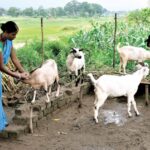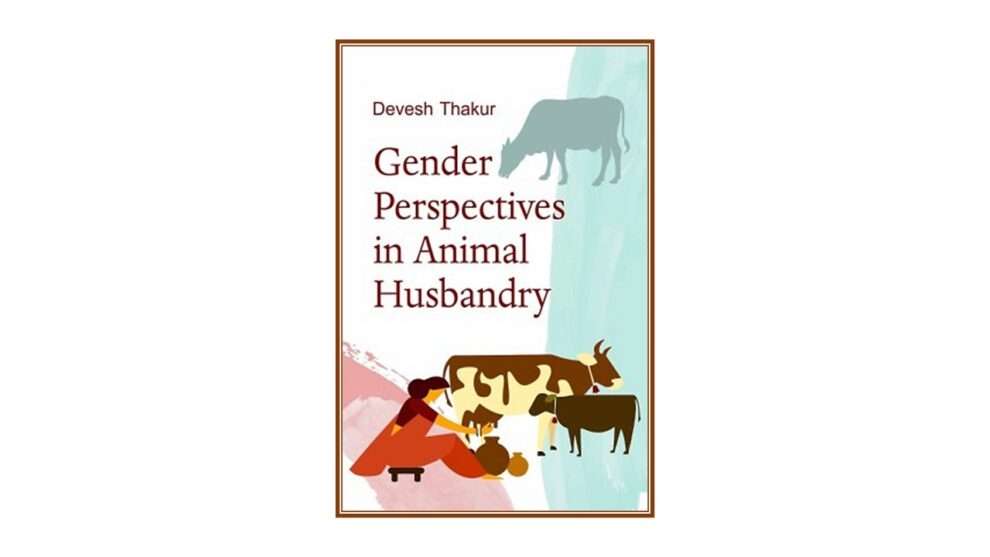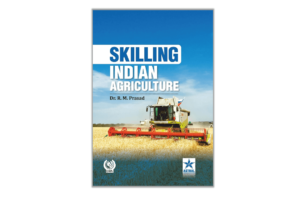Devesh Thakur (2024)
Publisher: New India Publishing Agency – NIPA, New Delhi India
Pages: 368 pages
ISBN-978-93-58876-39-0
eBook ISBN: 978-93-58878-64-6
Price: INR 2495
Understanding gender requires recognising its complexity and the ways it intersects with multifaceted aspects of identity, society, and culture. Of course, for a normal person, the term ‘gender’ paints the picture of gender empowerment, particularly ‘women empowerment’. But, from the perspective of a social scientist-livestock extensionist, Dr. Devesh Thakur answers a number of questions on this topic in his present book, ‘Gender Perspectives in Animal Husbandry’, for both students and the scientific community.
The author opens the book by making a clear distinction between the intricate terms gender and sex. He discusses the socially constructed attributes of gender, using some examples. For instance, he explains the concepts of gender equity and gender equality using the Women in STEM Fellowship. As we are aware, the STEM fellowship is offered to women pursuing higher studies in the fields of science, technology, engineering, and math. The availability of such fellowships breaks the gender gap, addressing the imbalance and creating more opportunities for women, thereby enabling equitable opportunities.
The author emphasise that gender is not a binary system of male and female but a spectrum of identities such as gender identity, gender expression, and gender dysphoria. Gender roles, norms, and expectations vary widely across different cultures, societies, and historical periods. Furthermore, the author concisely displays the development process, specifically in livestock production, through insightful cases such as Madhya Pradesh Women’s Poultry Producer Company Limited, Mulukanoor Women Cooperative Dairy, Theni Goat Farmer Producer Company Limited, etc.
The author then describes how to sensitise society about gender and related issues. From the farming community to the higher-level education institutes, gender sensitization is very essential. The author addresses prevalent notions around gender stereotypes, such as that women are inherently more nurturing, better suited for household chores, and overly emotional, illogical, and passive. These stereotypes often target women in society and government institutions. To counteract these biases and foster a more gender-sensitive society, the author proposes several actionable strategies. These include forming common activity groups, analysing gender-segregated data, and adopting diverse, gender-specific approaches. Such measures aim to challenge stereotypes and promote greater gender equity across various sectors.
The author strategically outlines the stages of gender sensitization, providing relevant examples at each stage to illustrate the progression. This detailed examination not only sheds light on the complexities of integrating gender considerations into various contexts but also underscores the significance of this process for future academic and societal discourse. As awareness and understanding of gender issues continue to evolve, this analysis will serve as a crucial resource for readers, offering valuable insights into the practical applications and implications of gender sensitization in literature and beyond.
In India, gender inequality and discrimination still prevail. The next chapter of the book discusses the different gender analysis tools. By studying and applying these tools, we can achieve equitable and sustainable development in society. The author highlights how inequalities in access to assets, opportunities, resources, and participation exist in national programmes or policies in the livestock sector. And he discusses, through gender analysis tools, how these inequalities could be resolved. Gender analysis helps identify disparities at every level, i.e., individual (women/men), household, and community. Understanding gender tools and their application is clearly depicted with the example of the Bioconversion of Crop Residues for Animal Feed (BIOCON) project. Conclusively, the BIOCON project in India exemplifies the importance of adapting agricultural technology and practices to the specific needs and conditions of its users. Initially focusing on improving mixed farming through straw treatment, the project evolved to recognise and address the significant yet often unrecognised contributions of women in the crop and livestock sectors. By incorporating gender considerations into its framework, the project not only improved the relevance and effectiveness of its interventions but also highlighted the disparities in recognition and compensation between men and women. This shift towards gender-sensitive practices and segregated data not only enhanced the project’s impact but also promoted greater equity and awareness, paving the way for more inclusive and fair development in agricultural communities. Specifically, the ‘livestock producer ownership patterns worksheet’ clearly displays the access to and control over resources among the livestock farming community.
As disparity in gender needs, access to resources, and contributions in the development process increases, the concept of gender mainstreaming comes into play. Through the concept of gender mainstreaming, we are introduced to gender perspectives in policies, projects, and programs. The author incorporated and discussed the gender mainstreaming concept with pertinent examples of ‘dairy cooperatives’, ‘poultry extension services’, etc. Recognising the disadvantageous position of women in all walks of life, such as education, ownership, decision-making, the workforce, nutrition, etc., and mainstreaming gender can promote equal opportunity, participatory involvement, and overall gender equality.
The last section of this book deals with ‘Gender Budgeting’. With gender budgeting, the government can influence how budget allocations impact women and men differently. Gender budgeting in the livestock sector not only supports gender equality and women’s empowerment but also enhances productivity, sustainability, and resilience, thereby contributing to broader agricultural and rural development goals.
Overall, this book comprehensively introduces gender perspectives in the livestock sector. It will enlighten readers on various aspects such as challenging stereotypes, promoting equality, and creating inclusive environments where individuals can express their gender identity freely and participate fully in society. For academic purposes, the book includes a range of question types, such as long and short descriptive questions, fill-in-the-blanks, true and false questions, and multiple-choice questions. These elements are crucial, as they help readers critically engage with various concepts and deepen their understanding of the material. This book could act as good reading material for those who appear in competitive exams. As a female scientist and first-time reviewer, I enjoyed reading and reviewing this book.
Ruchi Singh
 Dr. Ruchi Singh, Assistant Professor, Department of Veterinary and Animal Husbandry Extension Education, College of Veterinary Science and Animal Husbandry, Nanaji Deshmukh Veterinary Science University, Jabalpur, Madhya Pradesh 482001. Email ID: drruchivet@gmail.com
Dr. Ruchi Singh, Assistant Professor, Department of Veterinary and Animal Husbandry Extension Education, College of Veterinary Science and Animal Husbandry, Nanaji Deshmukh Veterinary Science University, Jabalpur, Madhya Pradesh 482001. Email ID: drruchivet@gmail.com









Add Comment